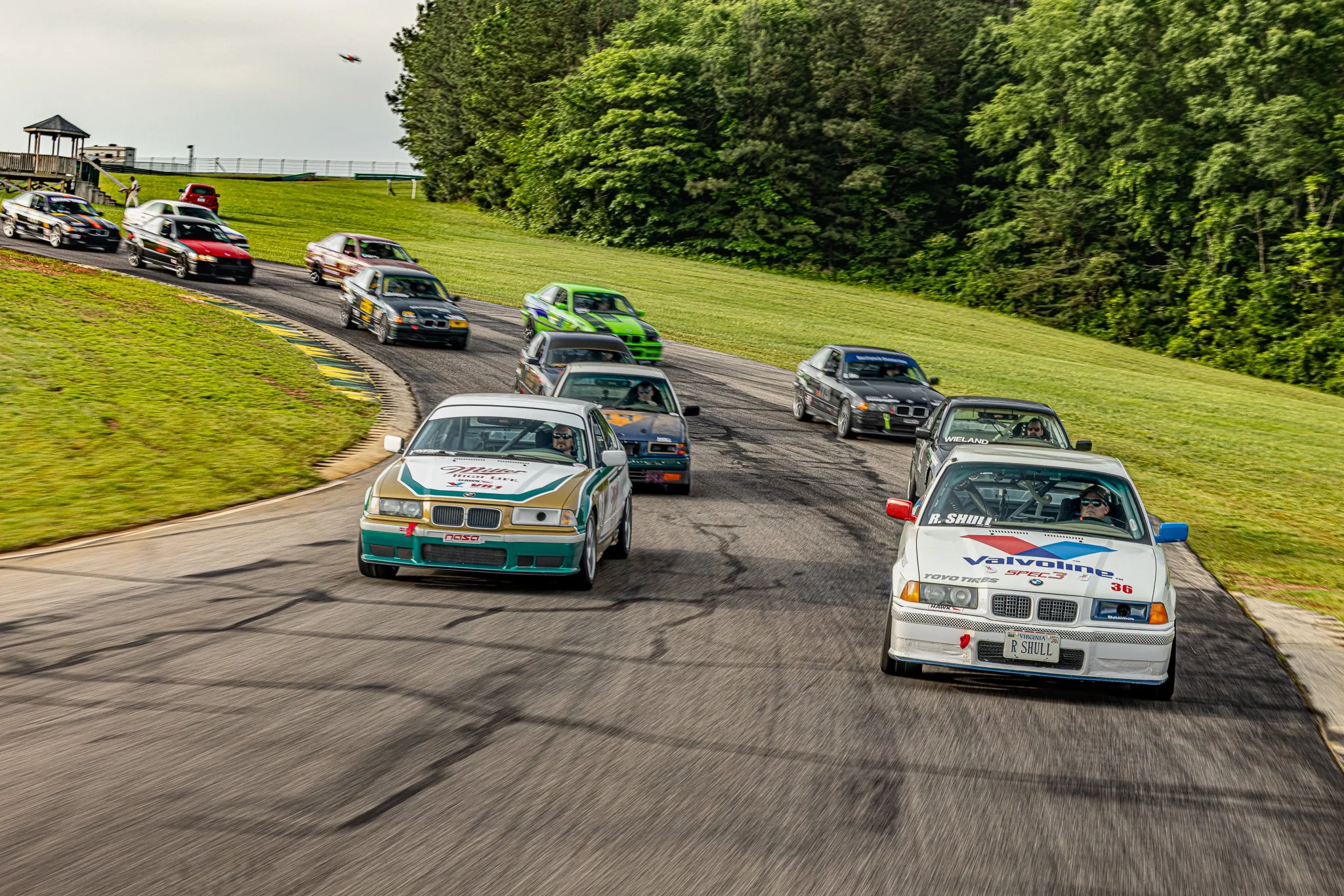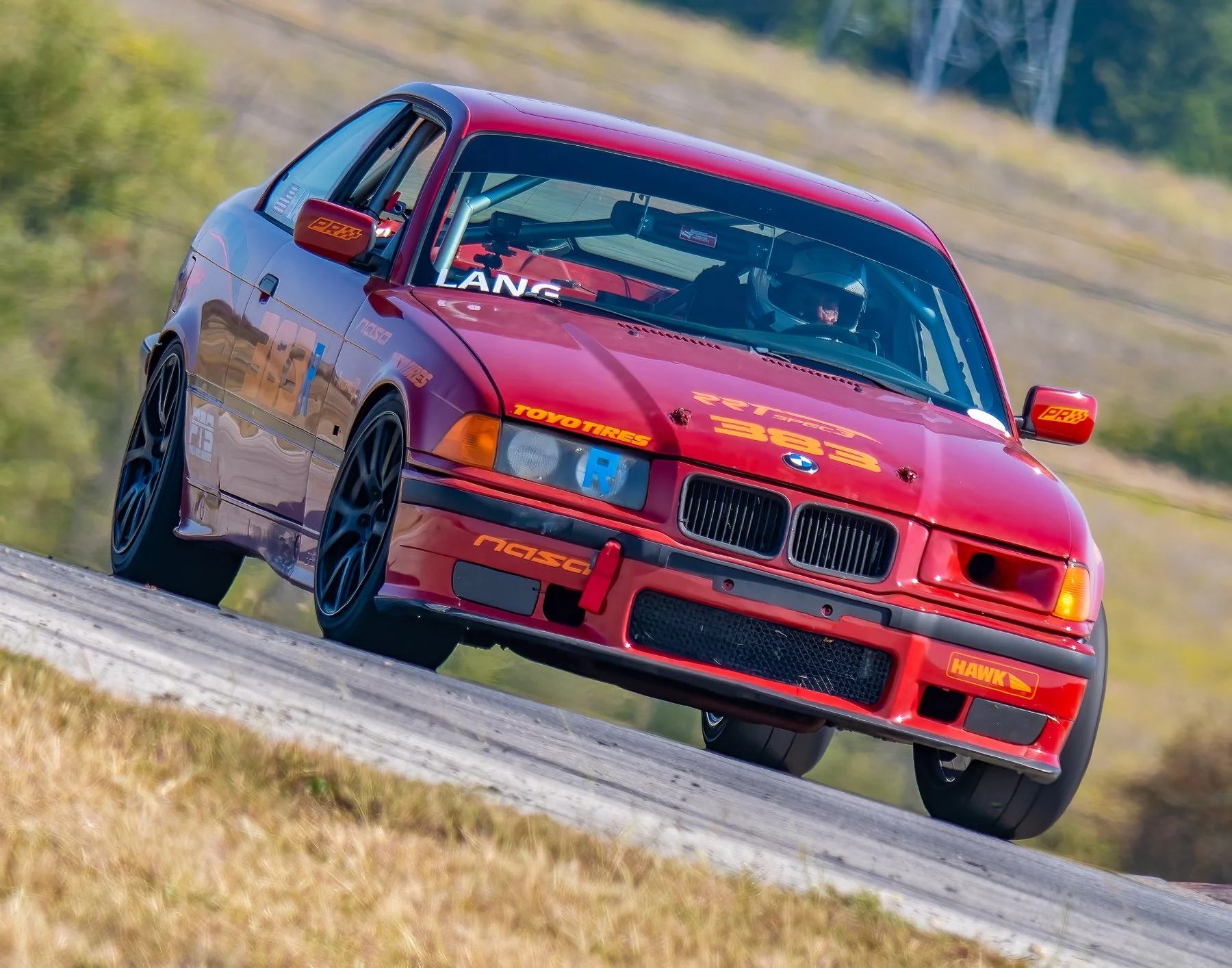Spec3 since the beginning
The Spec3 racing series has been the talk of the racing community since its re-launch in 2021, but did you know Spec3’s history starts much earlier than that? Check out some milestones throughout the years in this informative timeline
2008 - A new class for a new chassis
Spec3 was founded in the same NASA region that was the nurturing environment for Spec E30 and Spec E46 in their early days, NASA Mid Atlantic. The class was started with the same ethos as Spec E30 and would provide a place for an abundant chassis, the E36, to race without needing an “M” engine, big tires, and aero.
NASA would be beaten to the punch on securing the trademark for “Spec E36” following the roaring success of Spec E30 within NASA, thus the new class would be named “Spec3”.
Early 2010s - The early years
Spec3 proved to be a successful and popular class in the NASA Mid Atlantic region but did not see much success in other areas of the US at first. Spec E30 continued to flourish and proved the 3 series chassis cars can remain relevant and easy to source for a very long time. With the ruleset of the early 2010s, Spec3 cars were not much faster than other spec classes and Spec3 remained a niche market for the time being.
The global recession in 2009 would hurt the amateur racing industry as a whole and Spec3 was not exempt from difficulties in this time.
2010s - Early interest beyond Mid Atlantic
The early 2010s also saw interest in NASA regions outside NASA Mid Atlantic, with racers building cars in Florida, Southeast, and SoCal, but the class did not take hold there just yet. The right class, but a little too early for some. We salute these early adopters!
”I guess you guys aren’t ready for that yet. But your kids are gonna love it” - Marty McFly
Mid 2010s - Champions
Spec3 racers traveled to several “NASA Championships” events and crowned national champions.
Early Spec3 national champions
2014 Barry Battle
2015 Jon McAvoy
2016 Jon McAvoy
Late 2010s - Faster Cars
The Spec3 rules are constantly evaluated for areas of improvement. Throughout the 2010s, the rules for the cars were tweaked to incrementally improve handling and make the cars a bit faster, which separated the lap times from other classes in the “Lightning” race group and allowed for better racing. One notable change was around 2016-2017 with the adoption of a slightly stiffer spring package as well as a lower minimum weight which made the cars more “racey” and improved lap times.
2021 - Rebirth
2021 is where things start to speed up for Spec3 literally and figuratively. Spec3 would adopt several rule changes that would make the cars even faster and, most importantly for the class growth in the age of social media, more attractive.
17 inch wheels would become legal as well as M3 bumpers. While the 15 inch wheels/tires used for years were extremely affordable, the 17 inch wheels improved handling of the vehicles in undeniable fashion and nearly every Spec3 lap record would be broken by full seconds.
Spec3 cars would receive increased attention for their surprisingly quick pace given their low cost.
2021-2022 - Spec3 awareness
Following the 2021 rule changes. Spec3 racers launched social media accounts for the class which brought new awareness to Spec3 and NASA in general. Photos and videos of great Spec3 racing circulated the internet and new people were introduced to the class. Spec3 would become an example for other race series to follow in regard to fostering community and self promotion. The fair, talented, and intense racing of NASA spec series would be on full display.
2023 - Growth in new Regions
2023 saw the first Spec3 racing in the Northeast and Southeast regions with Taylor Johnson and Andy Schmidt taking regional championships in their regions respectively. This would mark the first time in Spec3 history that regions outside the Mid Atlantic had consistent Spec3 racing, marking a new era of growth for the class. As these completed cars saw action on track, new Spec3 builds would begin to surface all across the United States.
Jon McAvoy would take the National Championship at Pittsburgh International Race Complex.
2024 - Westward Expansion
As the east coast regions continued to grow and establish Spec3 as one of the more popular and consistent race fields, NASA regions to the west would begin to see Spec3 builds start, finish, and go racing.
2024 would see the first Spec3 racing in NASA Texas with Greg Lang leading the charge.
2025 - Coast to Coast
2025 would see Spec3 blaze past the projected 100+ Spec3 build number with “do it yourself” builders wrenching away in 11 different NASA regions in hopes of racing in the class themselves. NASANortheast, Mid Atlantic, Southeast, Florida, Mid South, Great Lakes, Mid America, Texas, Utah, Northern California, and Southern California would see Spec3 activity in 2025.
2025 would see the first home grown racing in NASA Southern California and NASA Mid South with Chris Cannon and Shawn Taylor leading the charge in those respective regions.
Beyond 2025
Later in 2025 and into 2026, we predict regions like NASA NorCal, SoCal, Great Lakes, Mid South, and more to experience continued “hockey stick” growth similar to the east coast regions. Regions such as Texas and Mid America are likely to see surges in energy as the regions around them grow and provide “crossover” opportunities.
If you’d like to race with us, read www.spec3.org/join and get involved today!












